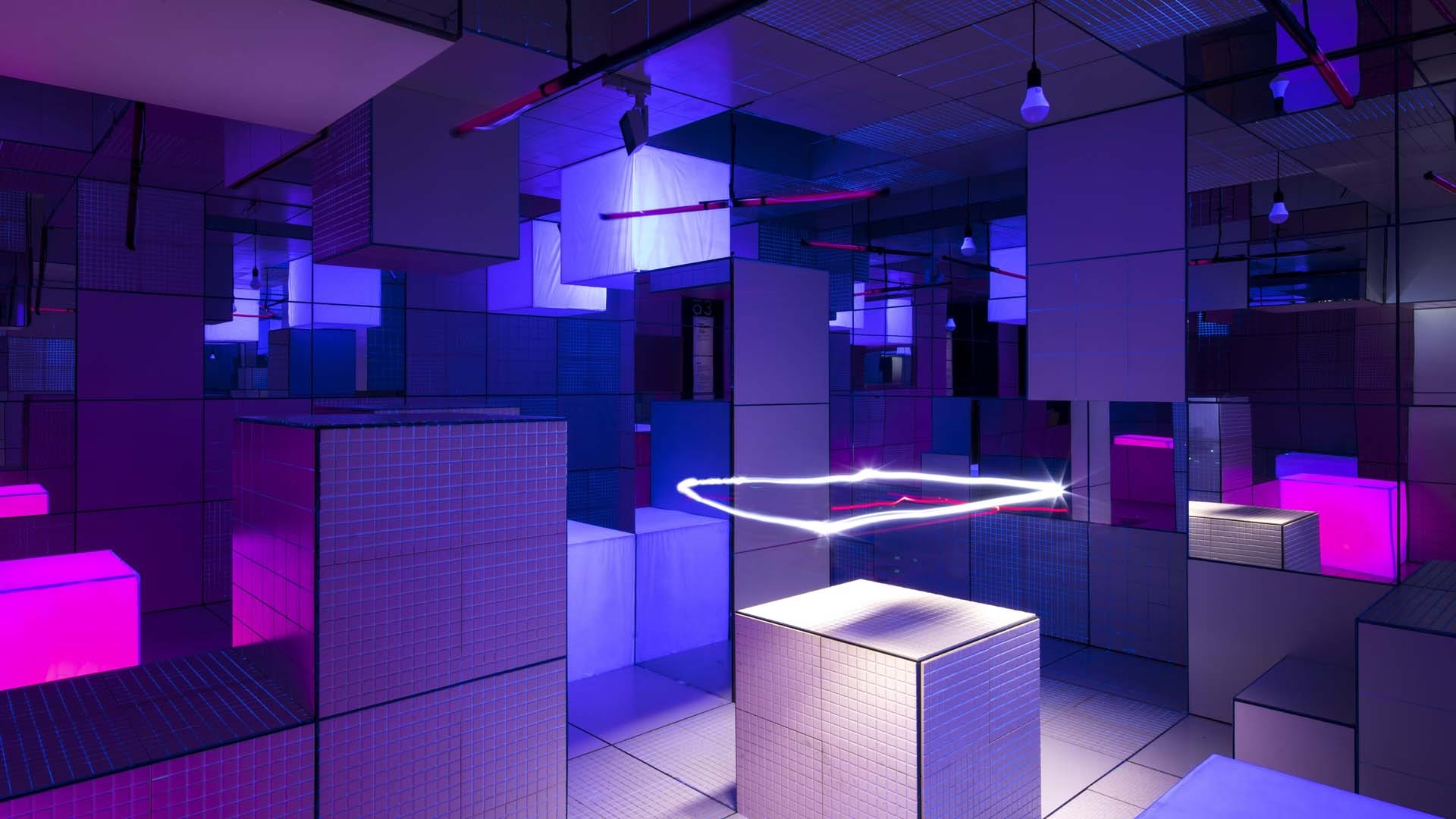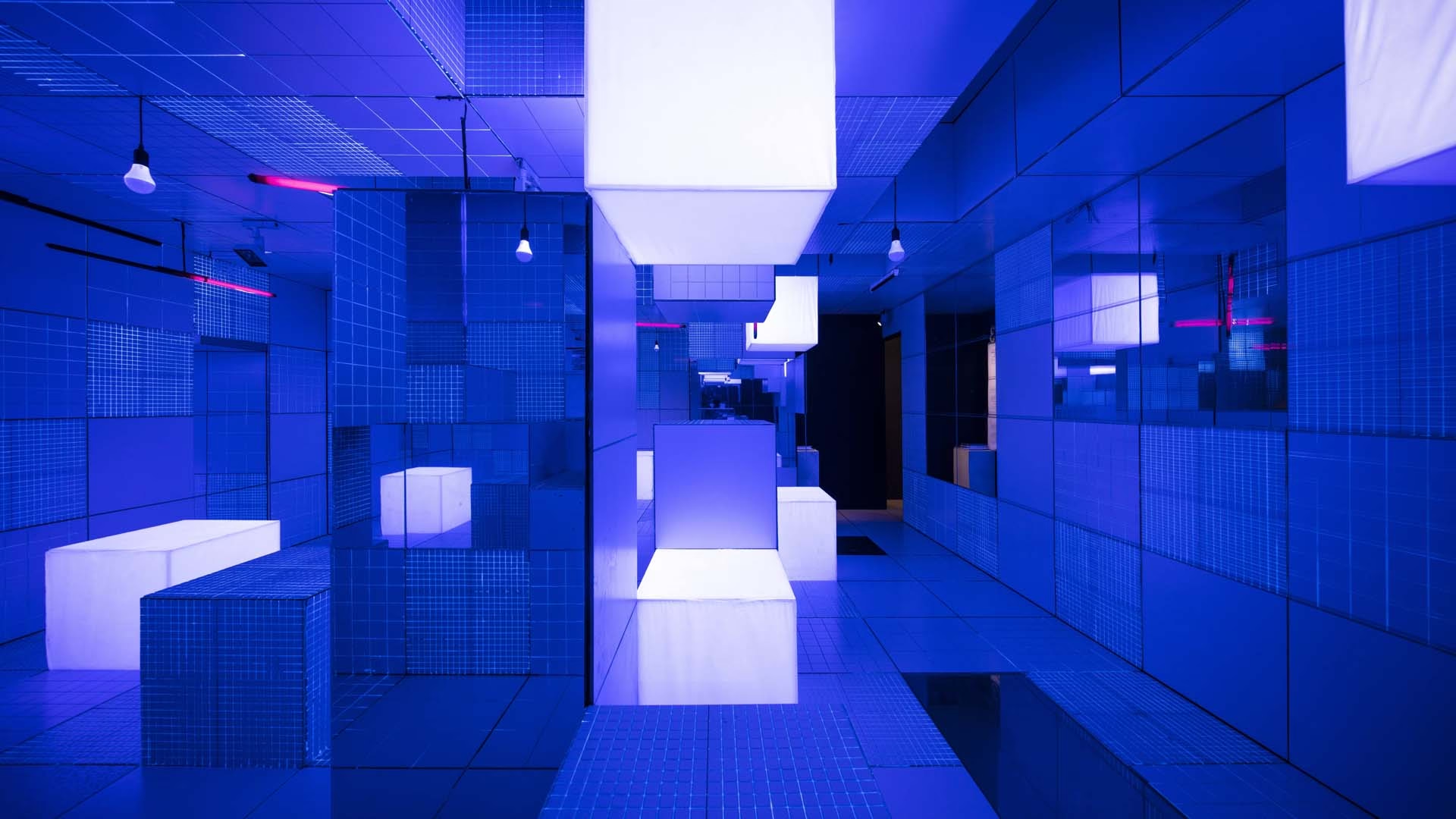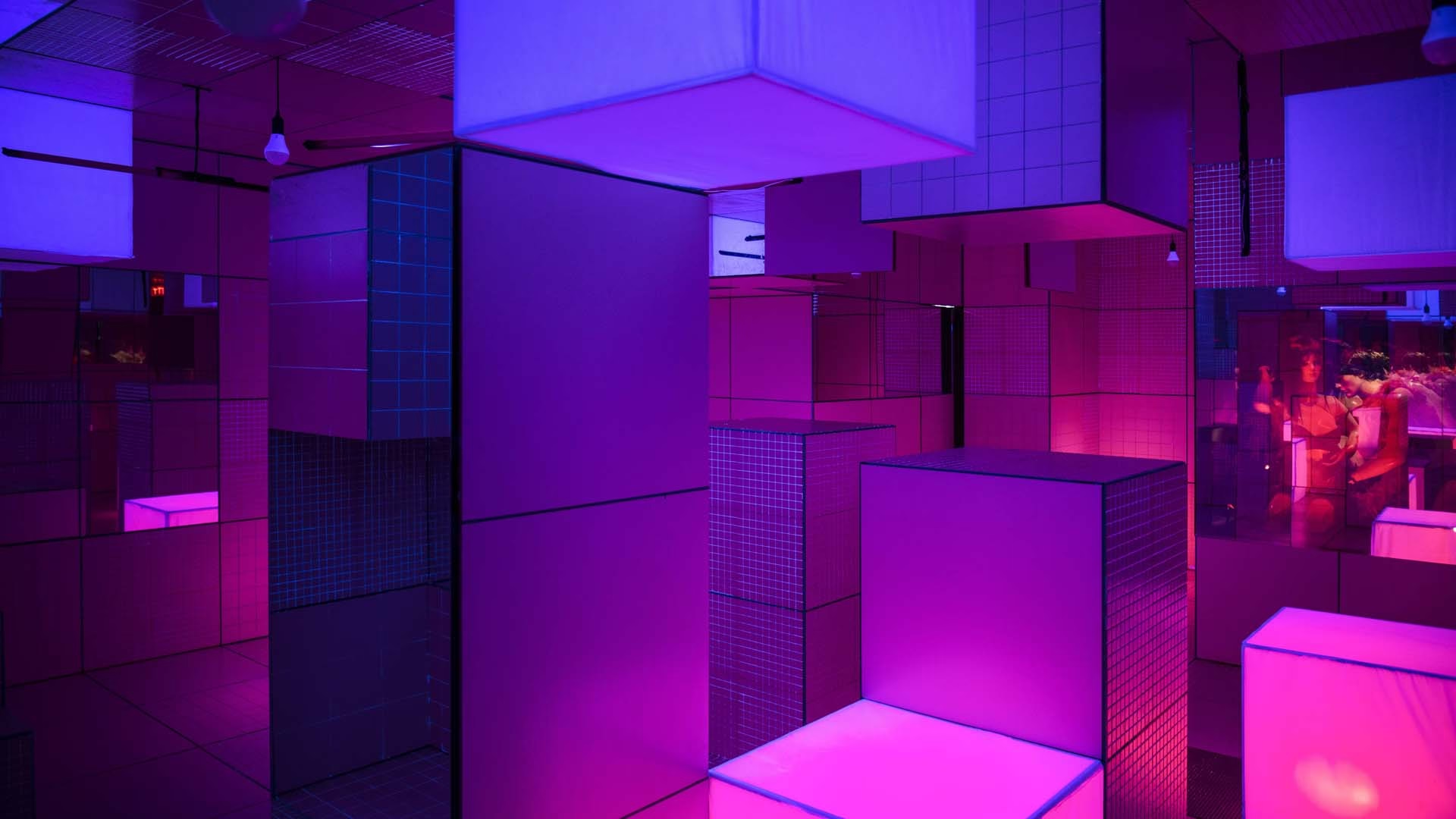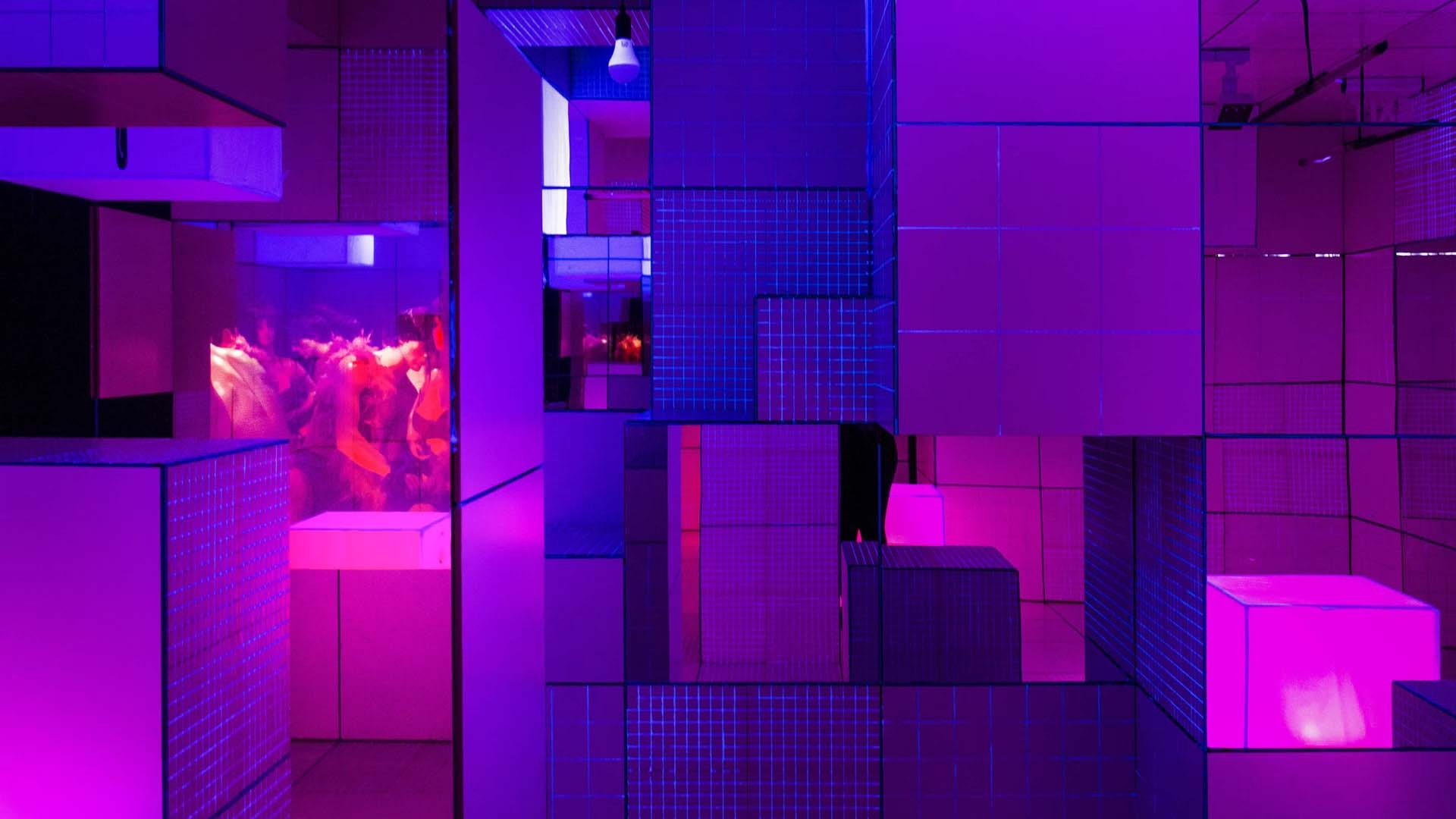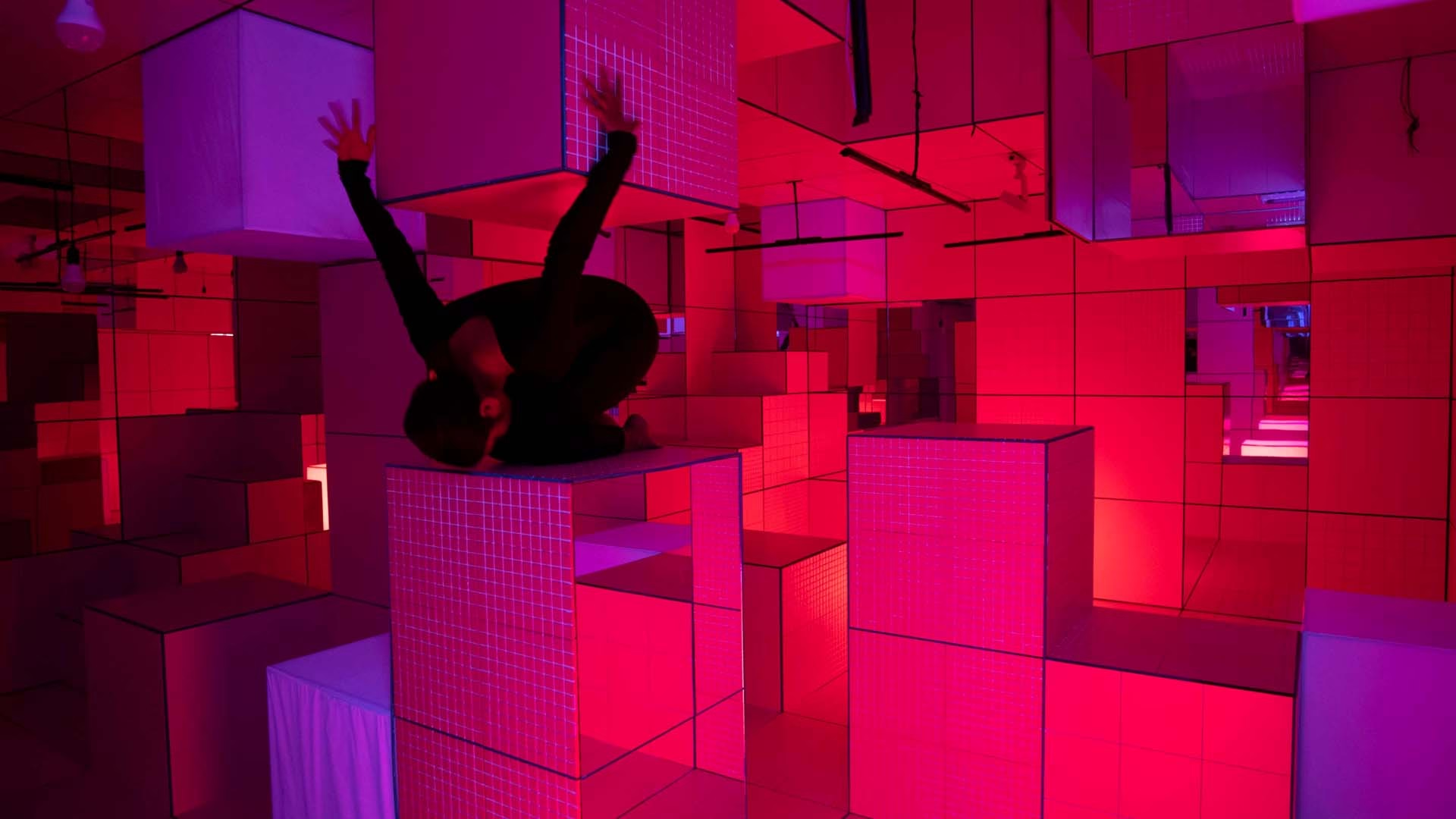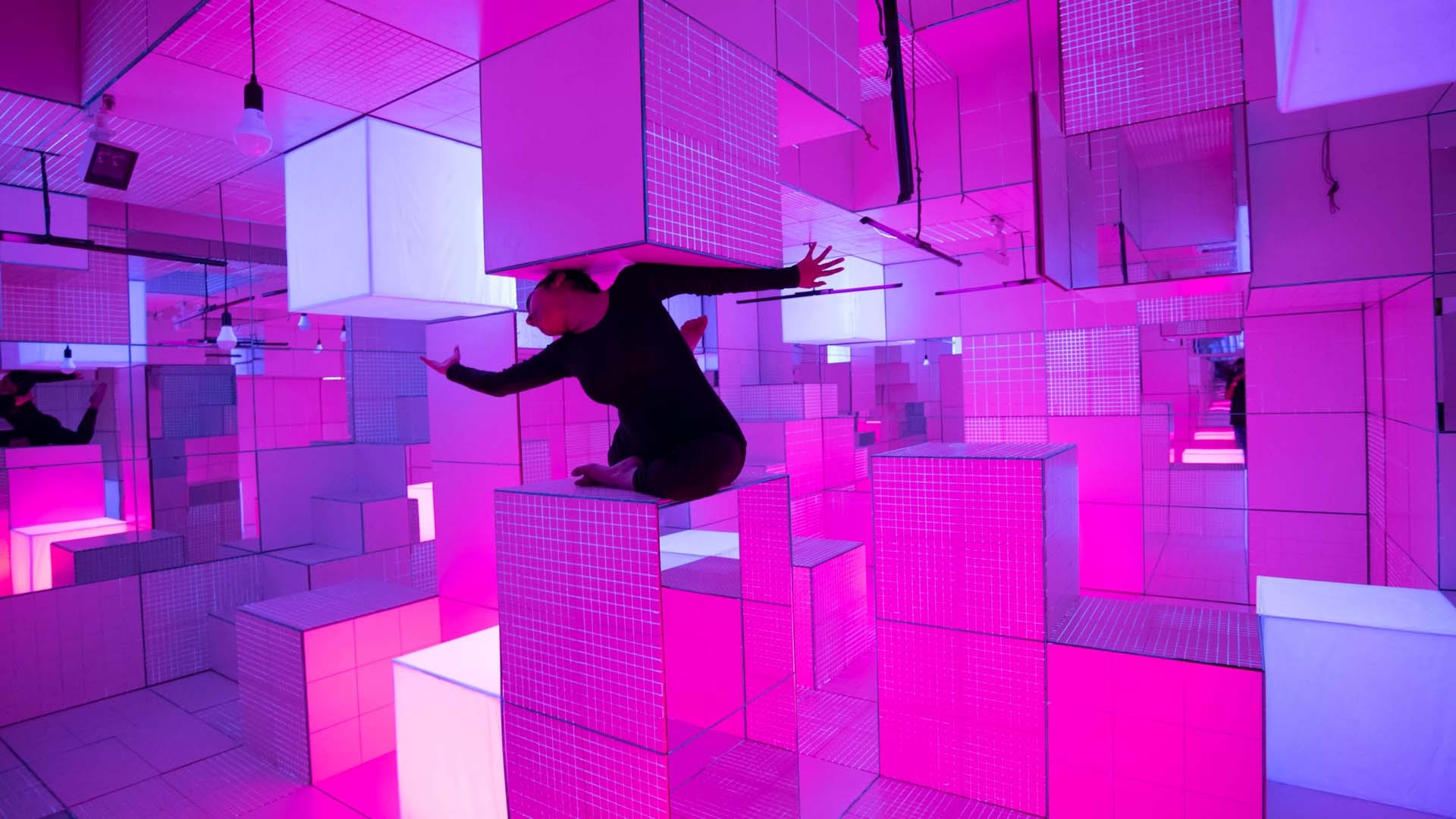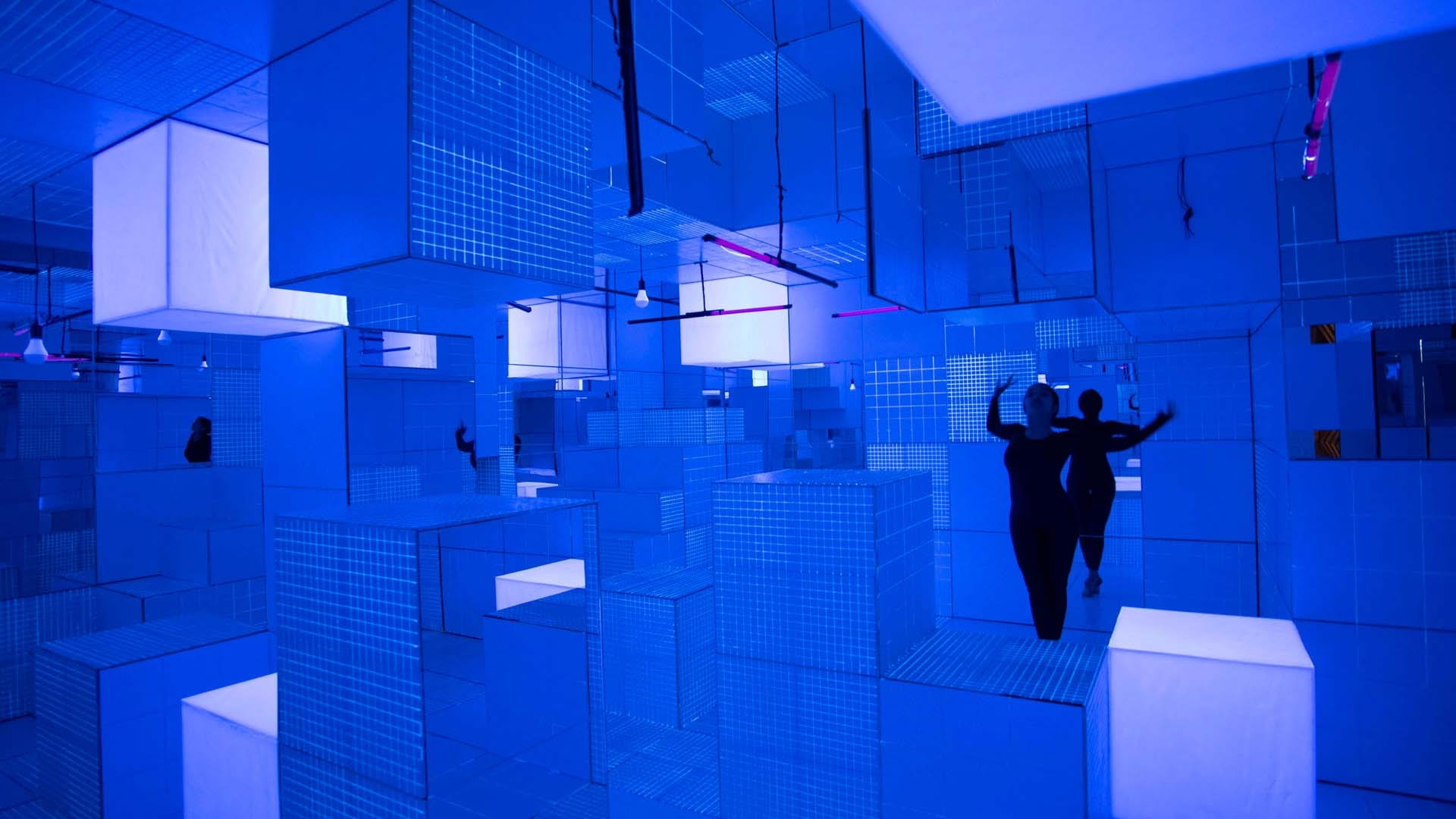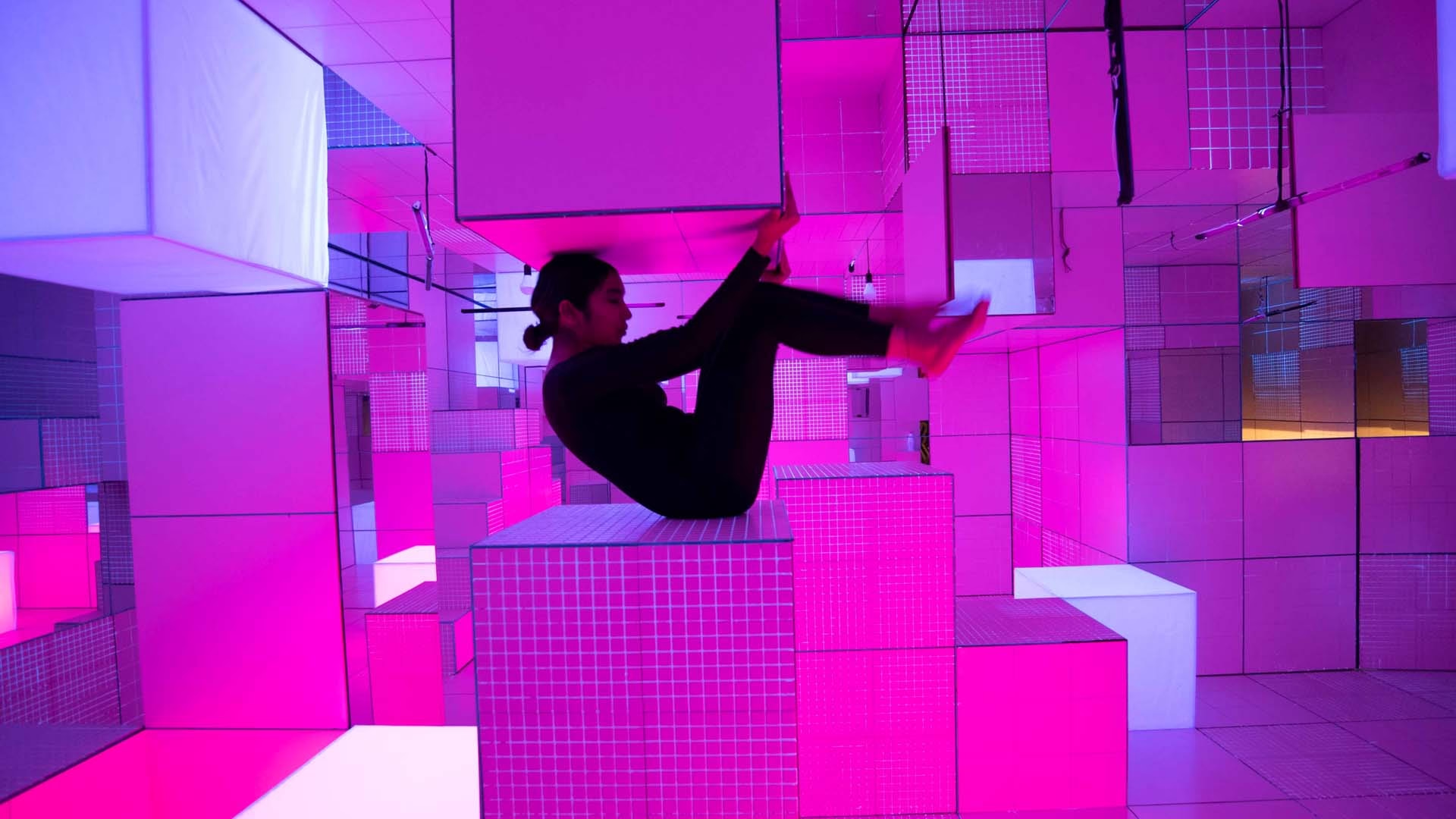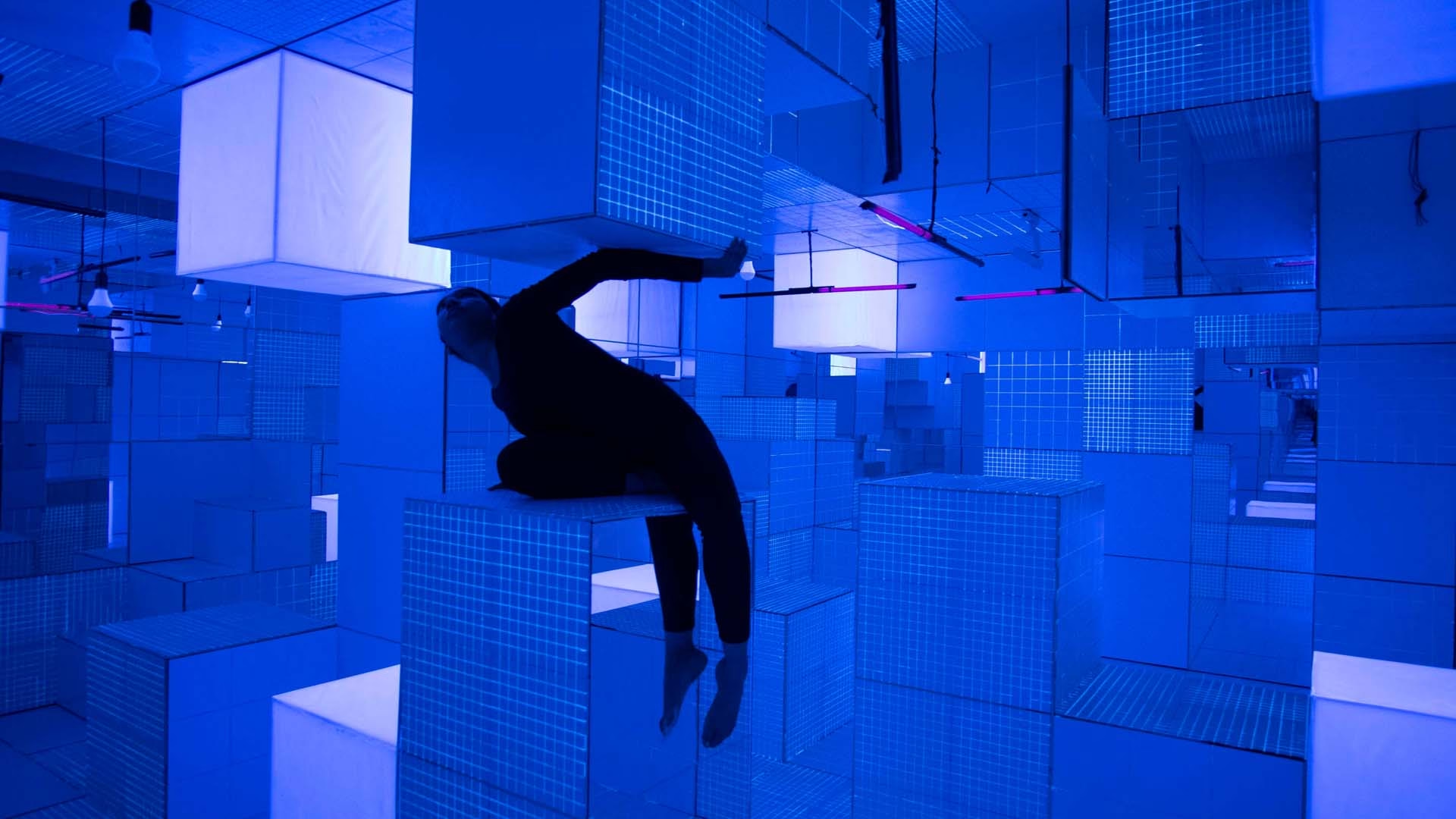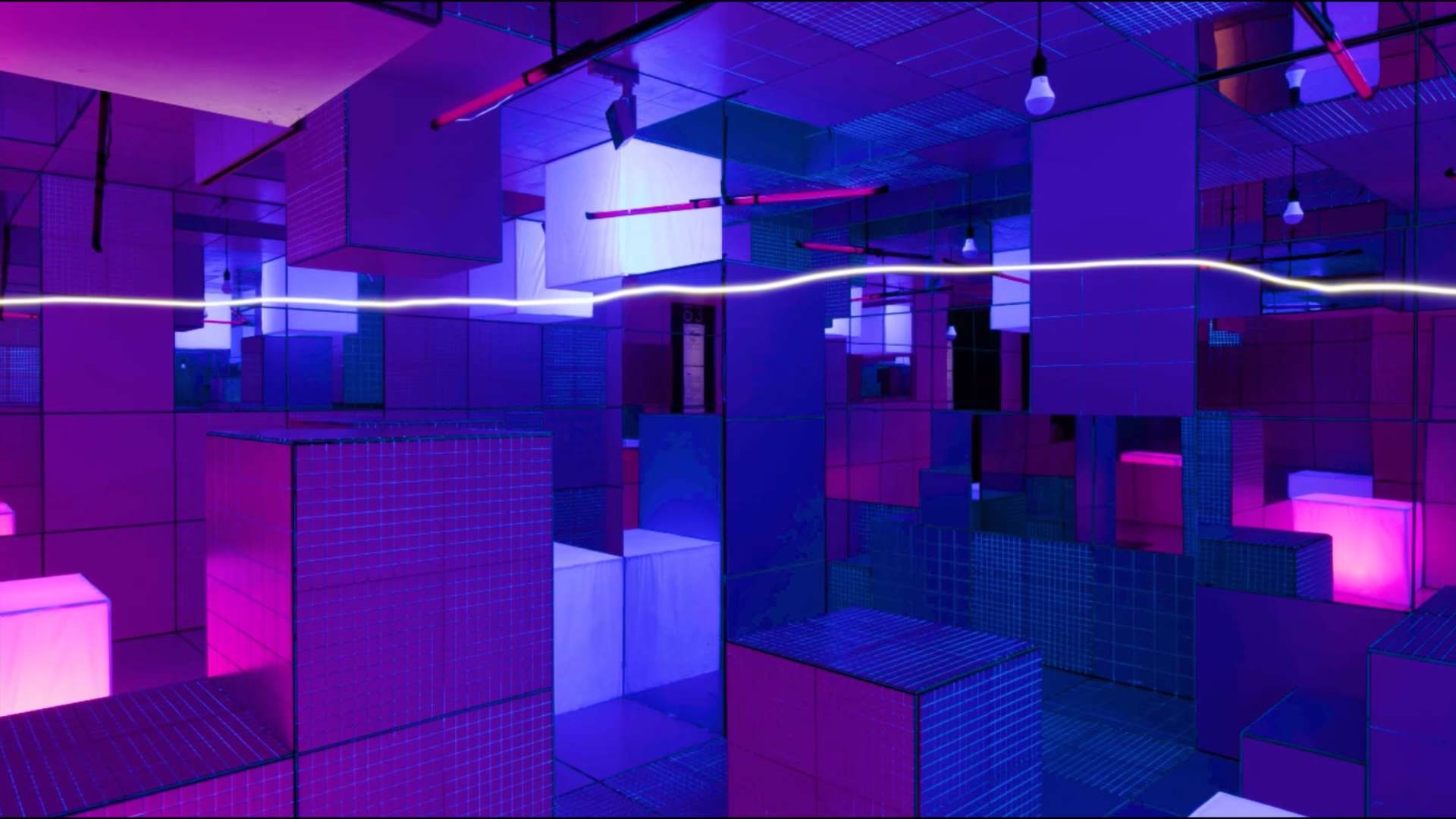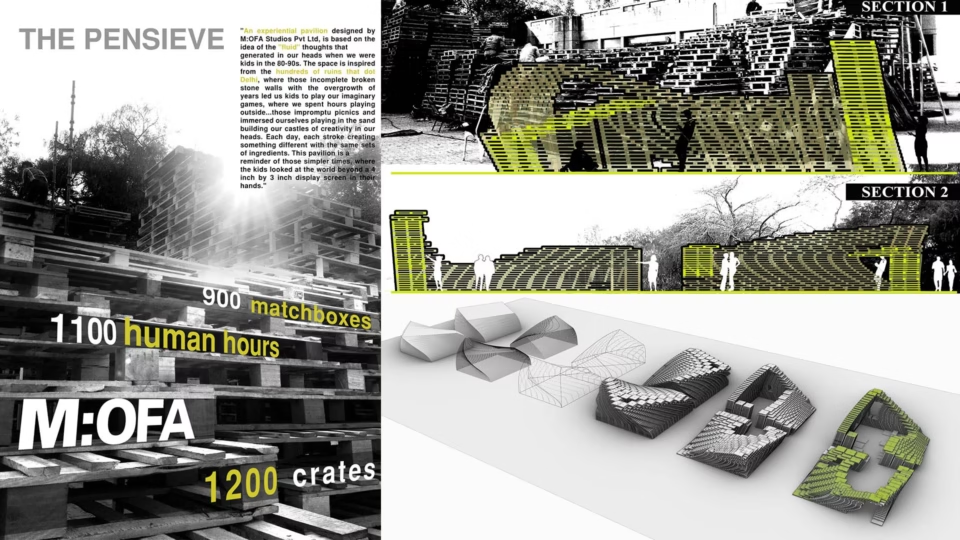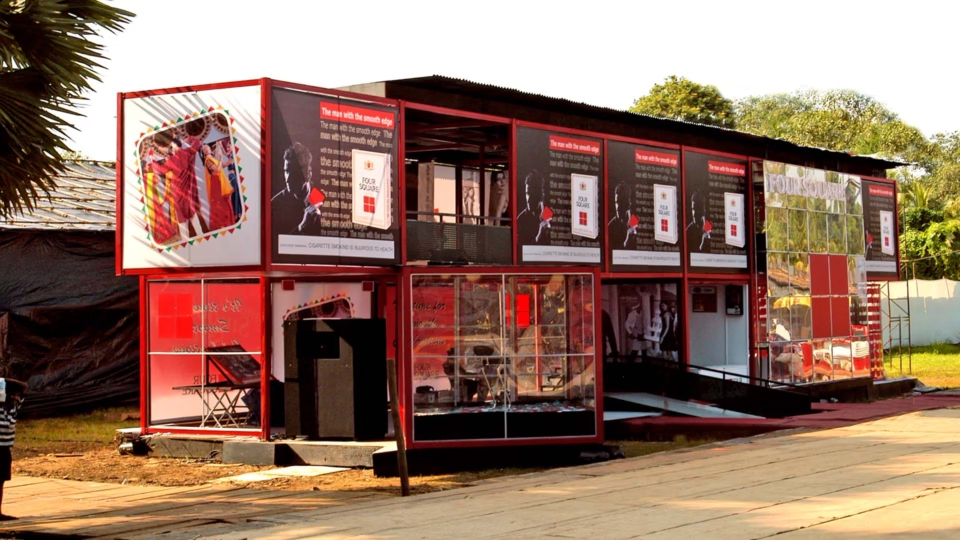Room of Illusions
Room of Illusions
The “Room of Illusions” is a captivating immersive space installed during STIR+ Materiology 1.0 Art exhibition, where it explores the intriguing relationship between physical space and the human mind. Room of Illusions is MOFA Studio’s answer to a question: if the mind can bend reality, how would that look at full scale? Inside a 500-sq-ft chamber built only from ceramic tiles and glass, visitors walk through a three-dimensional grid whose mirrors erase edges, whose sensors rewrite the scene, and whose ultraviolet wash shifts from blue to red to pink as each step is detected. The installation treats sight, sound, and touch as levers that expose curiosity, fear, desire, and awe, proving how easily the brain can be tricked.
Design constraints were severe. Space had to feel boundless, so mirrors, glow boxes, and “objects of interest” were placed to break volumetric cues. The programme had just ten days on site, forcing exhaustive digital simulations and a kit-of-parts build sequence. Cost had to stay low, so every dimension is a whole-tile multiple; a reversible fixing system lets 100 percent of the tiles be recovered, halving expenditure. Sensors were coded in-house to create varied effects without expensive hardware.
As each visitor crosses the floor, hidden triggers reveal tableaux behind one-way mirrors—flowers, masks, skeletal relics—while ambient soundtracks rise and fall. Infinite reflections multiply the body, making the room feel at once intimate and endless. Because the sequence depends on individual pace and position, no two journeys repeat; technology and psyche intertwine to generate countless permutations.
The project is a social experiment as much as an artwork. It interrupts the predictable cadence of daily life, urging people to face the subconscious hopes and anxieties that usually stay buried. By translating intangible mental processes into tangible light, material, and code, Room of Illusions reminds us that our internal narratives are not passive thoughts but active forces shaping the paths we choose next. Visitors exit conscious of imagination’s quiet authority over the tangible world.
The “Room of Illusions” is a captivating immersive space installed during STIR+ Materiology 1.0 Art exhibition, where it explores the intriguing relationship between physical space and the human mind. Room of Illusions is MOFA Studio’s answer to a question: if the mind can bend reality, how would that look at full scale? Inside a 500-sq-ft chamber built only from ceramic tiles and glass, visitors walk through a three-dimensional grid whose mirrors erase edges, whose sensors rewrite the scene, and whose ultraviolet wash shifts from blue to red to pink as each step is detected. The installation treats sight, sound, and touch as levers that expose curiosity, fear, desire, and awe, proving how easily the brain can be tricked.
Design constraints were severe. Space had to feel boundless, so mirrors, glow boxes, and “objects of interest” were placed to break volumetric cues. The programme had just ten days on site, forcing exhaustive digital simulations and a kit-of-parts build sequence. Cost had to stay low, so every dimension is a whole-tile multiple; a reversible fixing system lets 100 percent of the tiles be recovered, halving expenditure. Sensors were coded in-house to create varied effects without expensive hardware.
As each visitor crosses the floor, hidden triggers reveal tableaux behind one-way mirrors—flowers, masks, skeletal relics—while ambient soundtracks rise and fall. Infinite reflections multiply the body, making the room feel at once intimate and endless. Because the sequence depends on individual pace and position, no two journeys repeat; technology and psyche intertwine to generate countless permutations.
The project is a social experiment as much as an artwork. It interrupts the predictable cadence of daily life, urging people to face the subconscious hopes and anxieties that usually stay buried. By translating intangible mental processes into tangible light, material, and code, Room of Illusions reminds us that our internal narratives are not passive thoughts but active forces shaping the paths we choose next. Visitors exit conscious of imagination’s quiet authority over the tangible world.
